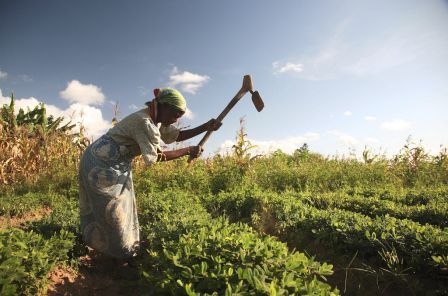  PROGRAMS & THEMES: Gender, IFIs and Food Insecurity
Download our Food Security Primer (pdf, 1013kb)

In March 2011, The United Nations Food and
Agriculture Organization (FAO) Food Price Index,
which tracks the price of 55 food commodities for
export, rose for the ninth consecutive month. The
index has now reached its highest level in both
nominal and real terms since the inception of the
index in 1990 (FAO, 2011).
While higher food prices have benefited food corporations, they have contributed to a stark increase in poverty in
developing countries. A recent World Bank (WB) report revealed that an additional 44 million people have been
forced into poverty due to the drastic rise in food prices since June 2010 (WB, 2011). Having already surpassed
the levels witnessed during the 2008 food crisis, the recent upsurge in food prices suggests that yet another food
crisis has struck poor women, men, girls and boys.
The Feminization of Food
Insecurity and IFIs
Women, who account for the majority of
both the world's poor and the world's smallscale
farmers, bear the brunt of rising food
prices and growing food insecurity in
developing countries. When men migrate to
find employment, women are usually left to
work family farmland. Women are also
responsible for gathering essential
household resources, such as firewood and
water, preparing meals and tending
livestock (Gender Action, 2011). Despite women's critical role in food production,
facts inside this primer demonstrate that International Financial Institutions (IFIs)
have failed to translate gender-mainstreaming rhetoric into action. To ensure that
women and men equally participate in and benefit from IFI investments in
developing countries, Gender Action works to raise awareness of some of the IFIrelated
causes and gender-specific impacts of food insecurity.
|
